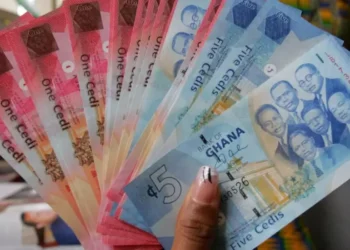On Saturday, May 24, 2025, many Ghanaians woke up to what seemed like long-awaited economic relief: a 15% reduction in public transport fares announced by the Ghana Private Road Transport Union (GPRTU) following the recent decline in fuel prices.
While this move was widely applauded, especially by civil society groups like the Chamber of Petroleum Consumers (COPEC), implementation across the country appears uneven, sparking debate over whether the measure is a genuine cost-saving intervention or a political gesture dressed as policy.
In an interview with The Vault News, several commuters confirmed that they indeed experienced reduced fares on Saturday. However, the general feeling was tempered by inconsistencies in implementation.
“I usually pay GH₵20.00 from Atadeka to Accra, but on Saturday, the mate charged GH₵17.00,” said Felicia Owusu, a trader. “It was a nice surprise, but some drivers were charging the old fare, claiming they hadn’t received official pricing charts.”
Others shared similar frustrations. Samuel Amankwah, a student who travels daily from Ashaiman to Central University, noted that while one trotro charged the new fare, another demanded the previous rate just hours later. “It’s confusing for passengers. Some drivers say the changes start on Monday, not Saturday. Who do we believe?”
The 15% reduction in fares comes as a response to a notable dip in fuel prices, which itself is driven by the strengthening of the Ghana cedi and improved global oil trends. COPEC and the government have presented this as evidence of responsive policymaking that puts consumers first.
Commuters questioned why enforcement mechanisms were not in place. “If they can increase the fares immediately when fuel goes up, they should be quick to reduce it when it goes down,” argued Adwoa Tetteh, a petty trader. Her sentiment is widely shared across the terminal — that reductions are reluctantly and inconsistently applied.
Drivers Defend Delays

In response, some commercial drivers interviewed admitted to hesitating in implementing the fare cuts immediately. Kofi Mensah, a driver on the Ashaiman-Circle route, argued, “The GPRTU said Saturday, but many of us didn’t receive the updated fare list until late Sunday. It’s hard to adjust if you don’t have the official notice.”
Another driver, Joseph Aboagye, expressed concerns about operational costs. “Yes, fuel prices have dropped, but spare parts are still expensive. Tyres, oil, and maintenance costs haven’t come down. So even if we reduce fares, it eats into our small profits.”
For many Ghanaians, the fare reduction is welcomed but tinged with skepticism. “Every little helps,” said Richard Boadu, a construction worker. “But until salaries go up and food prices come down, this feels like putting a plaster on a deep wound.”
While the GPRTU and the government deserve credit for acting on falling fuel prices, the implementation gaps and lukewarm response from some drivers reveal systemic issues in Ghana’s public transport regulation.

The lack of uniform enforcement, coupled with economic variables such as spare parts and erratic fuel trends, makes the fare reduction a temporary patch rather than a policy fix.
In an economy where public transport is the lifeline for millions, policies must be grounded in long-term strategy, not sporadic price changes.
If this fare reduction is to mean anything beyond headlines, government and unions must enforce compliance, monitor impact, and institutionalize a pricing model that reflects real economic conditions—not just the ebb and flow of fuel prices.
For now, passengers may enjoy the marginal savings. But as many at Ashaiman terminal have learned, they must stay vigilant because, in Ghana’s transport economy, relief is often temporary, and reversals come swiftly.
READ ALSO: Fiscal Discipline and Cedi Stability Key to Sustained Inflation Decline in Ghana- Deloitte


















